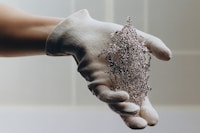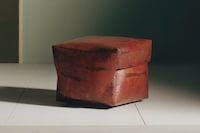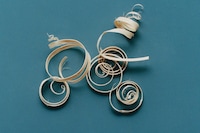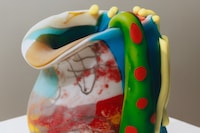Taking place in Madrid, this year’s edition of the Loewe Foundation Craft Prize was a call to pay closer attention to the objects that fill our lives
You may or may not know that Loewe dates back to 1846, when it began as a collective craft workshop in Madrid. It’s a legacy Jonathan Anderson embraced throughout his tenure as creative director – a role he stepped away from in March after 11 years – through initiatives such as the Loewe Foundation Craft Prize, which the Irish designer launched in 2016. With much to thank for new narratives around the value of craft, the prize has given a platform to global makers who both preserve and rethink its place in an increasingly mass-manufactured world.
In the limbo months before ex-Proenza Schouler duo Jack McCollough and Lazaro Hernandez officially make their debut in September, it felt right that this year’s prize returned to Loewe’s spiritual home of Madrid, following recent iterations in Paris, New York and Seoul. During an unseasonable 35-degree heatwave in the Spanish city, 200 journalists and figures from across the worlds of art and design gathered at the Thyssen-Bornemisza National Museum to see Japanese ceramicist Kunimasa Aoki awarded the €50,000 prize for his work, Realm of Living Things 19.
Standing proud in a serene carpeted space alongside the work of 29 other finalists, Aoki’s curved terracotta figure looked almost like it had landed from another planet. It was crafted by altering an ancestral coil process, applying immense pressure to clay before firing it in an electric kiln so hot that it began to burn the piece, resulting in a stack of delicate smoke-grey layers. It was selected from over 4,000 global submissions by a jury of 12 leading figures in design, architecture, and journalism for its strange beauty, with judges praising “the intricate details of the surface that form ‘little universes’” and the “tenacity of the firing process.”
Mixing geographies and traditions passed down through generations of makers, this year’s display felt like a call to pay closer attention to the objects that fill our lives – where they come from, why we make them, and what power they hold. “Human beings are tactile creatures who use objects to hold their memories, to reflect on important things in their lives, and that sense of lasting value is what these pieces represent,” says journalist and former Design Museum director Deyan Sudjic, a jury member since the prize’s inception. “It’s even more important now when so much of the world is transient and ephemeral. Pixels don't really leave many memories. These objects are asking us to think about how we define ourselves.”
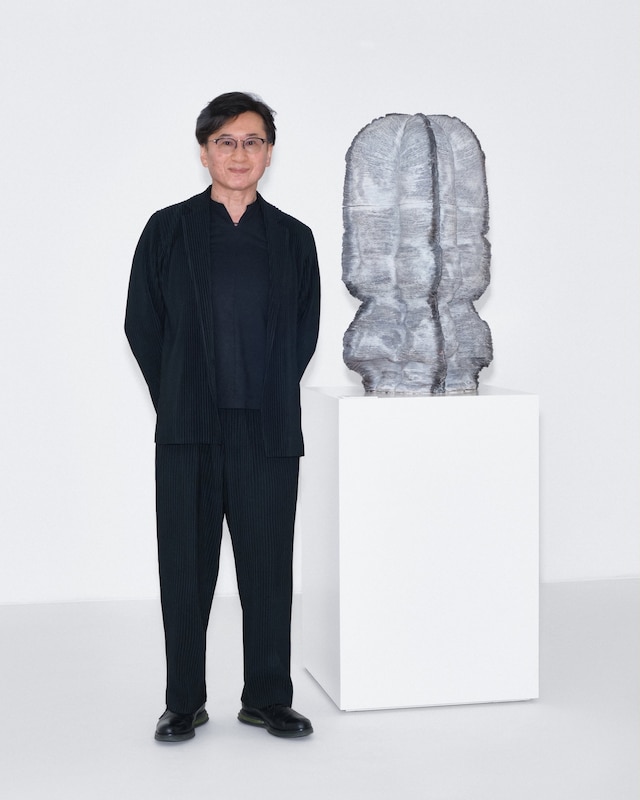
While Aoki was the cash-winning star, there were all sorts of other treasures on display too. Shredded aluminium cans made shimmering tufted trails through a tapestry by Kenyan artist Dickens Otieno, cut through with paths inspired by the tracks of safari wildlife. A four-headed broom addressed ideas of domesticity through a queer lens, by American artist Aspen Golann, who grew the corn herself in her back garden in Maine. Ideas of use and adornment were explored most exquisitely by makers like Fumiki Taguchi, whose delicate silver brooches possessed an elfin ethereality, and Margaret Rarru Garrawurra, who presented a sturdy bag made with an Aboriginal weaving technique that dates back thousands of years.
With such a strong pool of applicants, the jury also awarded two special mentions. One went to Lagos-based Nifemi Marcus-Bello, whose glistening architectural work, Bench with a Bowl, explores the little-documented world of car manufacturing in Nigeria. The other was given to Sumakshi Singh, who presented a work representing a 12th-century colonnade in Delhi that was once a Hindu and Jain temple and is now part of a mosque. She embroidered copper onto water-soluble fabric and then dissolved the fibres, leaving a barely-there, one-foot-wide strip of needlework that stretched from floor to ceiling – a ghostly aura of a monument that reflected on ideas of time, history and impermanence.

“I learned embroidery from my mother and my grandmother,” she said, standing beside the work, during the preview. “It’s always been about women’s labour. Embroidery is always considered secondary to weaving in the textile world because it’s surface embellishment. It’s not essential to the core structure of the fabric. The piece is about this monument that has witnessed all these shifting histories and had different roles.”
At a time when most of the objects we touch are churned out of factories, these works are life-affirming reminders of the meticulously made thing – objects shaped with care, intention, and hands that have spent years mastering a single skill. For Sudjic, the award plays a vital role in bringing attention to these practices that are too often overlooked. “Craft is a shrinking violet, and there’s a tendency to dismiss it in the fine art world,” he says. “I think the generosity of the award is that it brings the shortlisted people from around the world here to meet each other, to celebrate, to have a conversation. That in itself is a very special thing.”
Loewe Foundation Craft Prize is on show at Thyssen-Bornemisza National Museum in Madrid until 29 June 2025.

